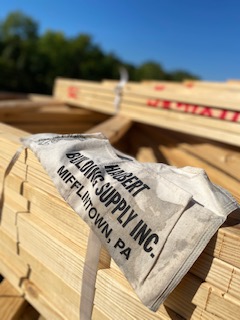Supplies Needed for the Job Folder
-
1 – roll of wide (and clear) packing tape. I suggest 2″ minimum width (like this: https://amzn.to/3YWOUhP).
-
4 – self-adhesive 2-hole punch fasteners (2″ capacity is plenty like these: https://amzn.to/3i0Od6G).
-
1 – solid 2-hole punch (I say solid, because there are some really flimsy ones out there: https://amzn.to/3Q1xPPV).
Creating the Job Folder
-
Take out two folders and nest one inside the other – lining up the “fold” on them.
-
Grab some good (and wide) clear packing tape (2″ wide minimum).
-
Now, open the outside folder and run that clear tape the whole distance of where the folds meet between exterior and interior folder (and don’t forget to flip it over and run a second piece of tape on the inside rear folder seam location). The tape should be evenly split between the inside folder and outside folder to ensure a good, solid fit.
-
Once the nested folders are taped together, grab those 4 self-adhesive 2-hole punch fastners, and you’re going to attach them to the top center of the following locations (TIP: Use the 2-hole punch and punch some holes in the top of four pieces of paper so you can properly position the fasteners without gues
-
-
Inside front cover of exterior folder
-
Outside front cover of interior folder
-
Inside back cover of interior folder
-
Inside back cover of exterior folder
-
At this point, you should have a Job Folder with 3 separate sections in which you can insert your job documents. In the next section, I’ll review what to put in each section.
Brad’s Non-Technical Explanation
I don’t want to assume you know what I’m talking about when I explain how to build a Job Folder.
You might be brand new to Home Building, so here’s a quick explanation of a Job Folder.
A Job Folder is a physical (or virtual/digital) folder that contains all the important documents needed to efficiently (and accurately) build a new home for a Customer.
Ideally, you should ensure your Job Folder is created and managed the same way every time. This way – no matter which Job Folder you (or someone else) picks up, you’ll know precisely where to find the information you need.
It’ll be a mix of information shared with the Customer – and – information kept within your office.
This Job Folder will be referenced from the time a Prospect becomes a Customer – and – will be used through (and after Construction).
It’s possible that you might need to reference the file even years later. That’s why it’s so important to be efficient in its organization.

WHAT TO PUT IN EACH SECTION
OK, you have your nicely-assembled multi-section Job Folder (complete with the adhesives as directed above), now it’s time to start filling your Job-specific information into those sections!
Section 1
This section will house a mix of important/urgent and important/not urgent information.
I use the fastener on the inside of the front cover to store that “quick job information” that you want to have handy – key people and/or dates that Home Builders need to quickly access. This is just a simple Excel spreadsheet that lets you manually write in information as the file works from Sales through the Pre-Construction Phase into Construction (and will be referenced during the build).
If you want a copy of the Excel file I use – to customize for your homebuilding business – you can snag it RIGHT HERE!
By attaching this FIRST to the inside front cover, you’ll always know where it is – and – it’ll be quick to fill out and/or review as-needed. Just use that handy-dandy two-hole punch to put holes in the top and slide it over the fastener that you stuck to the front in the assembly steps above.
When the construction schedule is created, I’d often print out a copy of the most up-to-date and attach it next. This way, if you don’t have access to an online schedule, you can quickly find the schedule for the specific job (especially if you are carrying that physical file to a jobsite or out-of-office meeting).
OH – if you’re looking to put your construction schedules into Microsoft Project, I just happen to have the exact template I used to manage over 1,000 new homes in Central Pennsylvania that you can have, too. You can grab a copy of that Microsoft Project Template to use, too.
But I digress. Back to the Job Folder!
The only other things I typically put inside that front cover are notes and/or things I was waiting for a response on the job – important AND urgent for this job. Maybe I requested a quote from a Trade Partner – or – I gave a price to a Customer and was waiting for them to confirm. Often, I would actually paper-clip those items so they were looser (but, admittedly, paper clips fly off and it’s easier to lose information this way).
I would use the fastener on the outside cover of the inside folder to store the “legal” documents associated with the job. This is a great place to store the actual Agreement of Sale and other legal documents signed by the Home Builder and/or the Customers. I often include documents from the Lender – and – even Agreements signed acknowledging Co-Broke Agents, etc.
If you have a copy of the Deed for the property, this is also a great place to attach for reference – if needed.
These are all important documents, for sure, but – once signed – you rarely need to actually use these documents (and, if you do, something might have gone sideways on the job). We had a one-page Accounting Supplement document (filled out by our Accounting Department when they were setting up the job for appropriate job cost accounting) that was also included in that section. If you’d like a copy of that, drop me a line at brad@bradhaubert.com, and I’ll see if I can get you a template for that, too.
As for attaching items, that’s about all I put in that section – BUT – I also keep some items LOOSE in this section. Specifically, I would keep the following loose (but paper-clipped together):
- The building details/specifications of the original Agreement of Sale
- Copies of each Change Order/Addendum (in proper numbered/dated order)
- Color Selections Sheet
By doing this, you’ll ensure you always know where to find the details of the job. And, because you often need to pull this out and review/mark-up/etc., it’s handy to pull out. Hmmm…..makes me wonder if I should also make my Building Details/Specs and Change Order Excel file available???? If this is something that might be of value to you, make sure you leave a comment below telling me that you’d like to see it, too.
SECTION 2
I only have one fastener in this section (the inside back cover of the interior manila folder), and I used this for lot-specific information. I attach the final Plot Plans – one with NO house on it, and one with the house plotted on it (with Customers’ signatures/initials). That’s about it.
But – I include a copy of the latest-and-greatest blueprints (red-lines) loose in this center section. Again, I keep these loose – since you’ll often need to pull these out and reference them (or mark them up as the job progresses). Ideally, these are also signed and dated by the Customers.
I guess I consider the blueprints the central part of the entire building process – so – it makes sense that I would put them in the center of the Job Folder. I’ll be covering this in my Blueprint Basics Course where I break down how to read them like a pro.
SECTION 3
The final section of the Job Folder is used for two different purposes. The fastener (on the inside back cover of the exterior folder) is used primarily for what I have officially called the “junky junk stuff.” Yeah – I know. I’m fancy with my naming.
So what is “junky junk stuff?” It’s that collection of stuff that has accumulated during the sales and construction process that might be important (old quotes, notes, pictures and ideas discussed with the Customers) – BUT – you don’t really want to just trash it. It MIGHT come in handy (but chances are pretty low).
By attaching to the inside back cover, it’s there – but – you won’t need to access it much at all (unless, of course, you need to).
What do I keep loose in this section? I keep copies of any physical orders to my Trade Partners and Suppliers. If you issue Work Orders and/or Purchase Orders and don’t store them online or digitally (OR just like physical copies), this is the perfect place to keep them.
In fact, I use a piece of 11″ x 17″ paper folded in half (with the crease towards the OUTSIDE of the folder) to hold all the orders inside. It creates a reverse folder inside the folder to keep the single copies of orders from falling out. Again, I keep it loose so it’s easy to pull out and access (which happens often to compare against invoices received, etc.).
I hope you found this guide to creating the Perfect Job Folder helpful!
I love sharing tools that worked for me over my career, and I plan on sharing more in the future.
If you found value in this – and/or – have any feedback for me (like if you’d rather see the instructions for assembling as a video instead of a written post), I’d love to have you comment below.
Happy Building to you!








